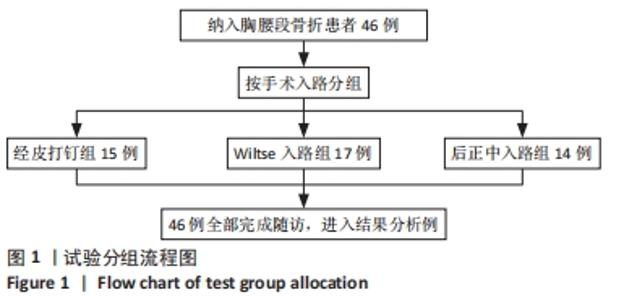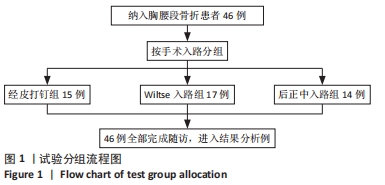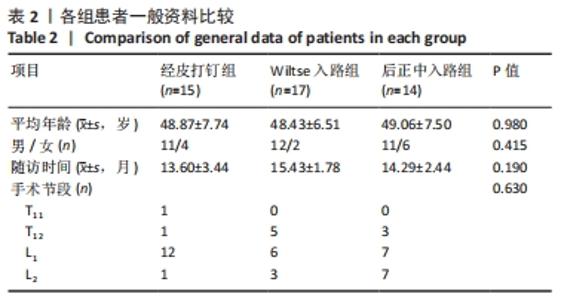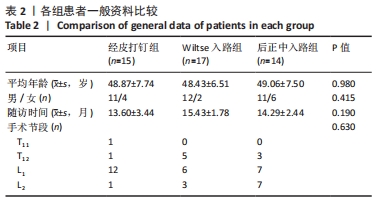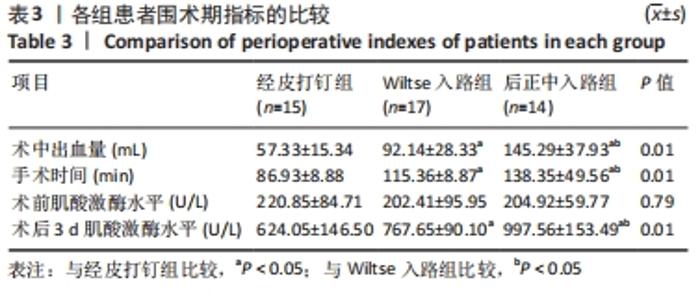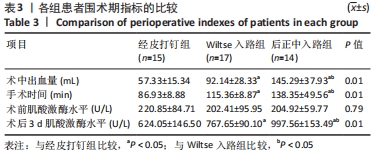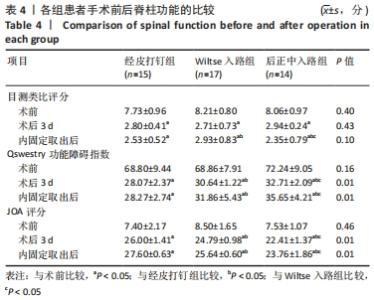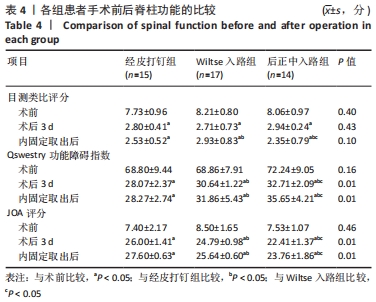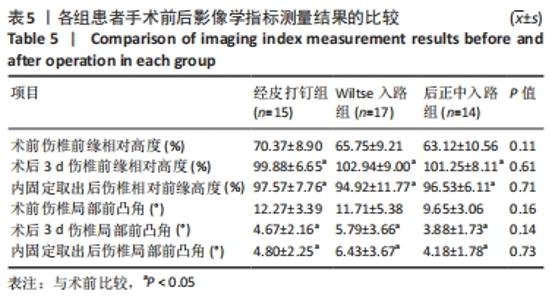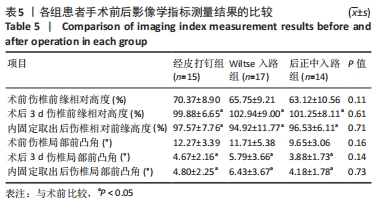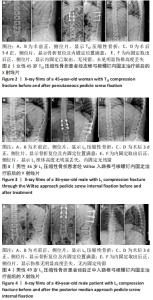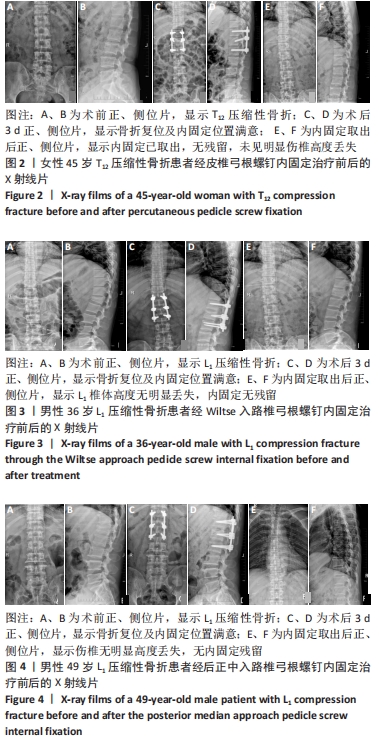[1] SPIEGL UJ, JOSTEN C, DEVITT BM, et al. Incomplete burst fractures of the thoracolumbar spine: a review of literature. Eur Spine J. 2017;26(12):3187-3198.
[2] RAJASEKARAN S, KANNA RM, SHETTY AP. Management of thoracolumbar spine trauma: An overview. Indian J Orthop. 2015;49(1):72-82.
[3] GE DH, STEKAS ND, VARLOTTA CG, et al. Comparative Analysis of Two Transforaminal Lumbar Interbody Fusion Techniques: Open TLIF Versus Wiltse MIS TLIF. Spine (Phila Pa 1976). 2019;44(9):E555-E560.
[4] SHEINIS D, SHEINIS V, BENHARROCH D, et al. Incidental Durotomy Following Transforaminal Lumbar Interbody Fusion Performed with the Modified Wiltse Approach. J Neurol Surg A Cent Eur Neurosurg. 2020;81(5):399-403.
[5] 王根林,张福占,谢计乐,等.Wiltse肌间隙入路联合伤椎置钉治疗胸腰段骨折[J].中华创伤骨科杂志,2015,17(12):1047-1052.
[6] GAZZERI R. Percutaneous Pedicle Screw Fixation Technique in the Thoracic and Lumbar Spine-Tips and Tricks. Surg Technol Int. 2016;28:303-310.
[7] LIU YL, MEHRA RN, CHOU D. Navigated minimally invasive facet fusion during percutaneous lumbar pedicle screw insertion: Technical note. J Clin Neurosci. 2020;71:257-262.
[8] HEINTEL TM, BERGLEHNER A, MEFFERT R. Accuracy of percutaneous pedicle screws for thoracic and lumbar spine fractures: a prospective trial. Eur Spine J. 2013;22(3):495-502.
[9] DU JY, KIELY PD, BOGNER E, et al. Early clinical and radiological results of unilateral posterior pedicle instrumentation through a Wiltse approach with lateral lumbar interbody fusion. J Spine Surg. 2017;3(3):338-348.
[10] GUIROY A, SÍCOLI A, MASANÉS NG, et al. How to perform the Wiltse posterolateral spinal approach: Technical note. Surg Neurol Int. 2018;9:38.
[11] GEJO R, MATSUI H, KAWAGUCHI Y, et al. Serial changes in trunk muscle performance after posterior lumbar surgery. Spine (Phila Pa 1976). 1999; 24(10):1023-1028.
[12] WOOD KB, LI W, LEBL DR, et al. Management of thoracolumbar spine fractures. Spine J. 2014;14(1):145-164.
[13] HUSSAIN NS, PEREZ-CRUET MJ. Complication management with minimally invasive spine procedures. Neurosurg Focus. 2011;31(4):E2.
[14] KORECKIJ T, PARK DK, FISCHGRUND J. Minimally invasive spine surgery in the treatment of thoracolumbar and lumbar spine trauma. Neurosurg Focus. 2014; 37(1):E11.
[15] LEE KH, YUE WM, YEO W, et al. Clinical and radiological outcomes of open versus minimally invasive transforaminal lumbar interbody fusion. Eur Spine J. 2012; 21(11):2265-2270.
[16] GELB D, LUDWIG S, KARP JE, et al. Successful treatment of thoracolumbar fractures with short-segment pedicle instrumentation. J Spinal Disord Tech. 2010; 23(5):293-301.
[17] TIAN JW, WANG L, XIA T, et al. Posterior short-segmental fixation combined with intermediate screws vs conventional intersegmental fixation for monosegmental thoracolumbar fractures. Orthopedics. 2011;34(8):e389-396.
[18] 王金宁,宋达炜,乔渝森,等.胸腰段脊柱骨折内固定:经伤椎与跨伤椎短节段经皮椎弓根螺钉内固定系统的应用[J].中国组织工程研究, 2019,23(28):4479-4484.
[19] DAHDALEH NS, SMITH ZA, HITCHON PW. Percutaneous pedicle screw fixation for thoracolumbar fractures. Neurosurg Clin N Am. 2014;25(2):337-346.
[20] KOCIS J, KELBL M, KOCIS T, et al. Percutaneous versus open pedicle screw fixation for treatment of type A thoracolumbar fractures. Eur J Trauma Emerg Surg. 2020; 46(1):147-152.
[21] TIAN F, TU LY, GU WF, et al. Percutaneous versus open pedicle screw instrumentation in treatment of thoracic and lumbar spine fractures: A systematic review and meta-analysis. Medicine (Baltimore). 2018;97(41): e12535.
[22] ZHAO Q, ZHANG H, HAO D, et al. Complications of percutaneous pedicle screw fixation in treating thoracolumbar and lumbar fracture. Medicine (Baltimore). 2018;97(29):e11560.
|
